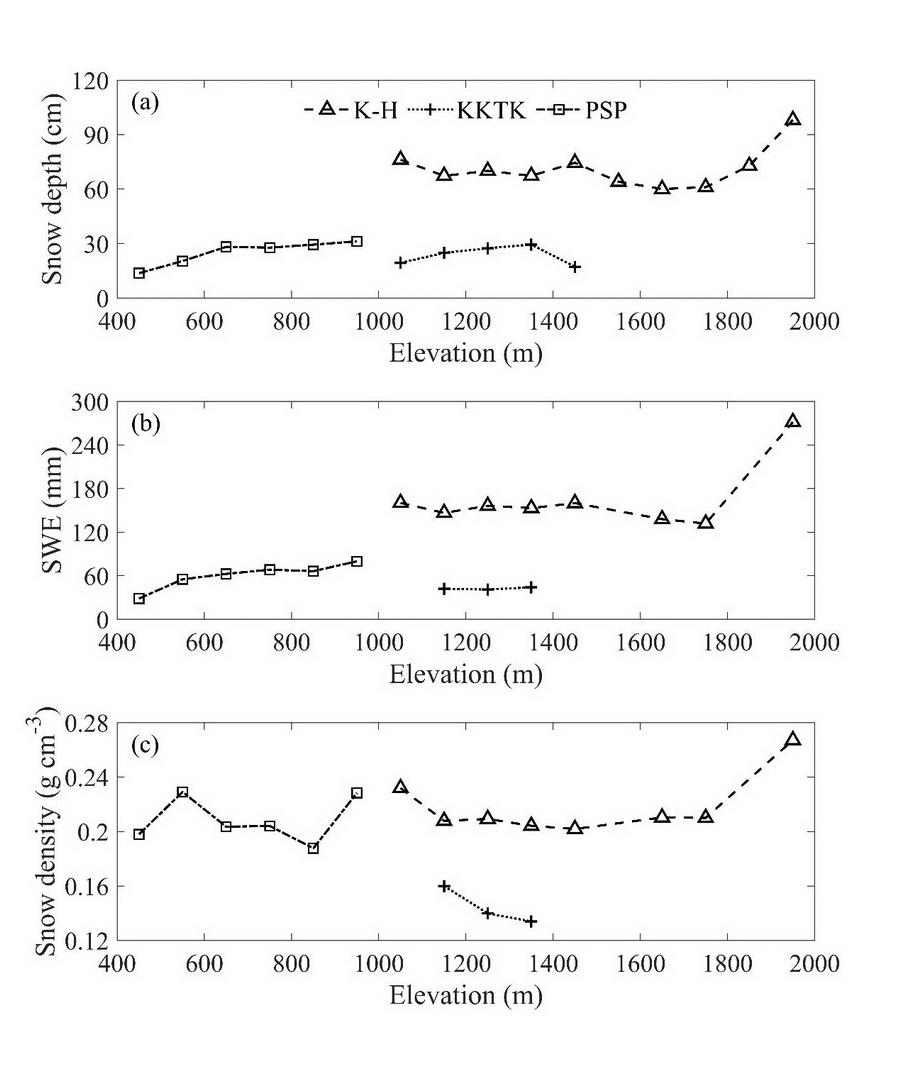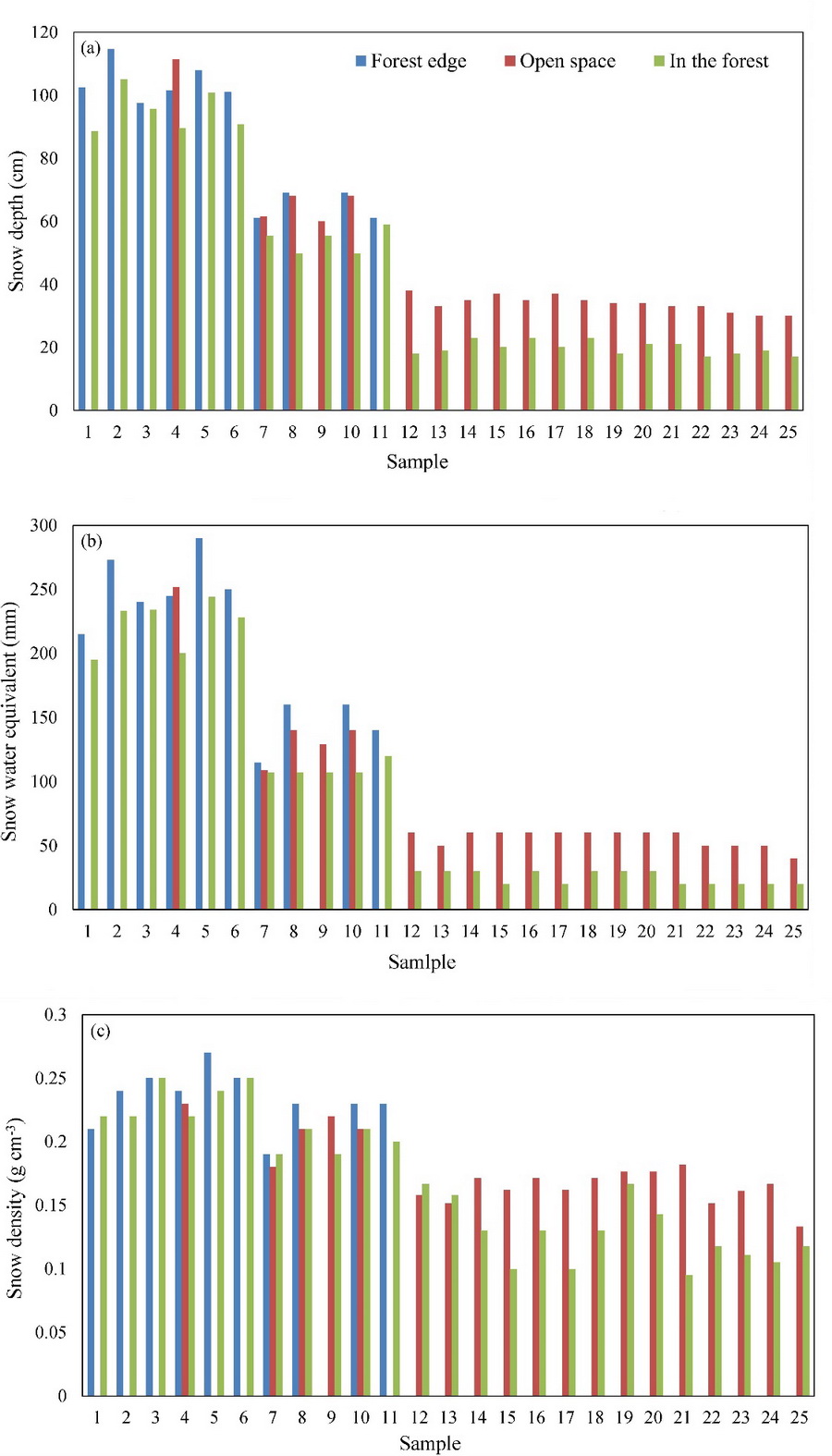Scientists Reveal Snow Cover Distribution in Southern Altai Mountains
Updatetime:2021-04-02From:
【Enlarge】【Reduce】
Snow cover is an important indicator of climate change. Snow properties and their changes are crucial to better understanding of hydrological processes, soil thermal regimes, and surface energy balances. There are significant changes in snow cover with the increasing global warming, which has important impacts on hydrology, ecology and social systems.
The southern Altai Mountains are the main snow distribution area in China. Snowmelt is one of the important freshwater resources and the main supply of water to river discharges, agricultural irrigation, and water resource utilization.
Due to the complex terrain and lack of weather stations in the Altai Mountains, the current snow cover observations are still insufficient, which limits the evaluation of the impact of snow cover on regional hydrological cycles and water resources.
Recently, researchers from Northwest Institute of Eco-Environment and Resources (NIEER), Chinese Academy of Sciences (CAS), together with their colleagues from Lanzhou University, investigated the spatial characteristics of snow depth, snow water equivalent (SWE), and snow density in the southern Altai Mountains.
They analyzed the influences of terrain and forestation on these snow cover parameters across the Altai Mountains in China, based on winter snowfield surveys in 2015?2017.
The results indicated that there was significant spatial heterogeneity of snow cover across the southern Altai Mountains in China. Snow depth (25?114 cm) and SWE (40?290 mm) were greater in the alpine Kanas-Hemu region, and shallow snow accumulated (9?42 cm for snow depth, 26?106 mm for SWE) on the piedmont sloping plain. There was no remarkable regional difference in the distribution of snow density. Snow property distributions were strongly controlled by topography and vegetation in the southern Altai Mountains.
Besides, elevation and latitude were the most important factors affecting snow depth and SWE, while snow density was strongly affected by longitude. Mean snow depth increased from 13.7 to 31.2 cm and SWE from 28.5 to 79.9 mm, respectively, with elevation increased from 400 to 1000 m a.s.l. on the piedmont sloping plain. Snow depth decreased to about 15.1 cm and SWE to about 28.5 mm from 1000 to 1800 m a.s.l., then again increased to about 98.1 cm and 271.7 mm on peaks (~2000 m a.s.l.) in the alpine Kanas-Hemu (Fig.1).
There were also remarkable differences in snow accumulation in slope aspects. Leeward slopes were easier to accumulate snow cover, especially on north-, east-, and southeast-facing slopes.
Canopy interception was also the cause of the difference in snow distribution. Snow depth, SWE, and snow density in forests were reduced by 8%?53%, 2%?67% and –4% to +48%, respectively, compared with surrounding open areas. Especially when snow depth was less than 40 cm, snow depth and SWE differences in forests were more exaggerated (Fig.2).
This study provides a basic data set of spatial distributions and variations of snow depth, SWE and snow density in the southern Altai Mountains, which can be used as important verification data for remote sensing and hydrological models.
These first-hand observations will help to better understand the relationship between snow, topography and climate in mountainous regions across the northern Xinjiang and other high-mountain Asian regions.
This work has been published as an article entitled “Impacts of landscape and climatic factors on snow cover in the Altai Mountains, China” in Advances in Climate Change Research. Dr. Xinyue Zhong from NIEER and Prof. Tingjun Zhang from Lanzhou University are the first and corresponding authors, respectively.

Fig.1. Snow depth (a), SWE (b), and snow density (c) as a function of elevation in the three regions during 2015–2017. (Image by ZHONG Xinyue)

Fig.2. Snow depth, SWE, and snow density measurements in the forest, along the forest edge, and in the open space during 2015–2017. (Image by ZHONG Xinyue)
Contact:
ZHONG Xinyue
E-mail: xyzhong@lzb.ac.cn
Northwest Institute of Eco-Environment and Resources, Chinese Academy of Sciences, Lanzhou, China.
Appendix




